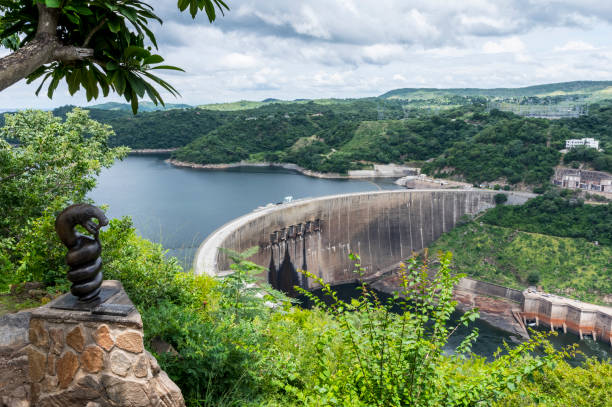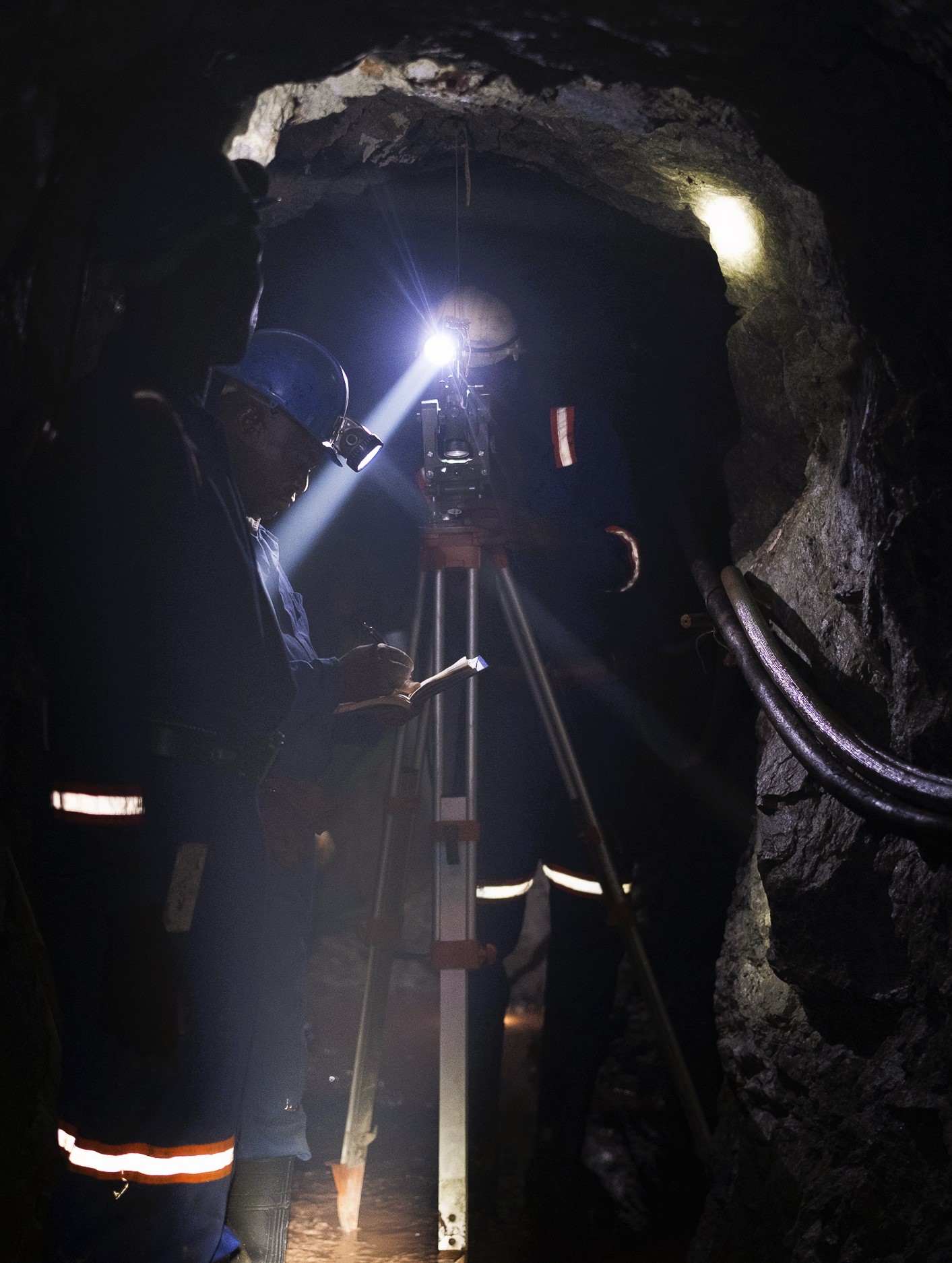Miners taking another look at Zimbabwe

Venice Mine Complex headgear and Abby Shaft before rehabilitation.
By Danae Voormeij, M.Sc., P.Geo.
 Zimbabwe has a rich history of gold mining. With 26 greenstone belts, it is possibly the most gold-endowed country in Africa. Already when the Knights Templar were fighting in the Holy land, the Shona people were mining gold in Zimbabwe. In 1932 it had more than 700 gold producers and in 1987 Zimbabwe was the second largest gold producer in the continent.
Zimbabwe has a rich history of gold mining. With 26 greenstone belts, it is possibly the most gold-endowed country in Africa. Already when the Knights Templar were fighting in the Holy land, the Shona people were mining gold in Zimbabwe. In 1932 it had more than 700 gold producers and in 1987 Zimbabwe was the second largest gold producer in the continent.
The first European colonists arrived in the 19th century, along with Cecil Rhodes and the British South Africa Company. They established the Geological Survey in 1910, and since then Zimbabweans have been fighting for ownership of their land.
In 2001, independence-fighter, turned Prime Minister, turned tyrant, Robert Mugabe oversaw the seizure of white-owned farmland in a violent land redistribution program. By 2010, he ordered foreign-held mines be at least 51% indigenous ownership, including profitable gold and diamond mines.
The drive for indigenization led to decreased investment with a negative effect on growth, sustainability and expansion of the mining industry.
As with similar exercises in Zambia and the DRC, nationalization of mineral assets proved catastrophic and while the policy has long since been removed, the sector has not recovered. The wider operating environment poses further challenges.
 Zimbabwe’s power grids experience regular forced blackouts, partly due to low levels at Lake Kariba, reducing supply of hydroelectricity, making the cash-strapped country increasingly reliant on imported energy. It becomes harder and more costly to keep water out of the mines, and they begin to flood.
Zimbabwe’s power grids experience regular forced blackouts, partly due to low levels at Lake Kariba, reducing supply of hydroelectricity, making the cash-strapped country increasingly reliant on imported energy. It becomes harder and more costly to keep water out of the mines, and they begin to flood.
Political turmoil has long deprived investors of the long-term stability required for exploration, so the mines do not have a pipeline of deposits and are running low on mill ore feed.
Compounding those challenges is the requirement that all gold is sold to the country’s Central Bank at a set price. A portion of the payment is made in the local depreciating currency, at a government-enforced rate. In 2008, Zimbabwe became the first country to produce a trillion dollar note.
One by one, the country’s once-prolific gold mines faded out. With the gold price increasing, artisanal and small-scale gold mining is rising, and some mines survive through artisanal mining tributes.
Today, Zimbabwe sits at the bottom of the Fraser Institute’s Top Mining Jurisdictions. Just mention the country and investors shy away.
However, the new Zimbabwe is what I would call prime first-mover country – fresh out of a poor climate for investors into a world of opportunities. It is well worth investigating.
In 2020, Barrick Gold Corp. [TSX-ABX; NYSE-GOLD] and B2Gold Corp. [TSX-BTO; NYSE-BTG] arrived looking at potential gold projects for investment.
Some companies came in earlier, they navigated the system and made deals that resulted in win-win situations for the company, the government and the people.
 In 2006, Caledonia Mining [NYSE-CMCL] purchased Blanket mine from Kinross and managed to survive and even thrive in Zimbabwe.
In 2006, Caledonia Mining [NYSE-CMCL] purchased Blanket mine from Kinross and managed to survive and even thrive in Zimbabwe.
When forced to give up majority rule, they arranged 51% shareholding rights that went to Zimbabwean nationals. By 2015, Caledonia produced 3D geological models showing gold-bearing reefs open at depth and started to sink a 1200 meter-deep Central Shaft into the mine, which was opened in 2022 by current President Emmerson Mnangagwa.
Today, after purchasing back company shares, Caledonia owns 64% of the Blanket gold mine, a 80,000 oz per year gold operation at a mine cost of US$900/oz. It also owns 100% of Bilboes mine, in the Feasibility Study stage.

Another example is Mopani Gold, a subsidiary of Maris Limited, an Africa-focused private equity business founded by Charlie Tryon, that seeks to make money for its shareholders, and make a positive impact for local communities. Maris purchased the Venice Mine Complex (VMC) in 2015, peacefully relocated the illegal gold miners, began rehabilitating the mine and installed a massive solar power system for backup of electricity.
Dewatering of the mine has progressed to deeper levels; shafts are having their hoisting capacities increased and original miners and their descendants have been reinstated. The people working at the Venice Mine today are proud, their grandfathers worked there before them. This pride builds trust and results in healthy, sustainable, operations.
Ask Charlie how he manages to operate successfully in Zimbabwe, and he will tell you that the reality on the ground is usually better than from afar.
In 2019 Mopani hired geologists – including myself – to digitally capture and create 3D models of the gold-bearing reefs at Venice, which includes seven operating gold mines.

Historically, the Venice mines were operated by Falcon Gold in the 1980s, who mined down to 300 metres and kept meticulous records, including survey points, drill logs for 80,000 metres of underground core drilling, and 25,000 underground channel samples assayed for gold, which facilitated the digitization process.
The resulting 3D models is exciting as it shows the reefs continue along strike, are open at depth and are likely part of a single large system.
The Venice mine is located in the Midlands greenstone belt, which also hosts the world-class deposits Cam and Motor, Dalny, and Globe & Phoenix. These mines extend down to at least 1800 metres depth.
Mopani Gold’s CEO Marc Nicolle is looking to drill test the reef model and build up the gold resources for Venice. Previously, Marc served as the CEO of Dallaglio Investments and led the rehabilitation of the Pickstone Peerless and Eureka mines in Zimbabwe, which were similarly under-appreciated historic gold mines.
These companies demonstrate that developing gold mines in Zimbabwe can be done in a win-win situation, where the local people, the local governments, foreign companies and their investors all benefit. More companies willing to invest are needed to help lift this resource-rich country out of poverty and revitalize their proud mining culture.
